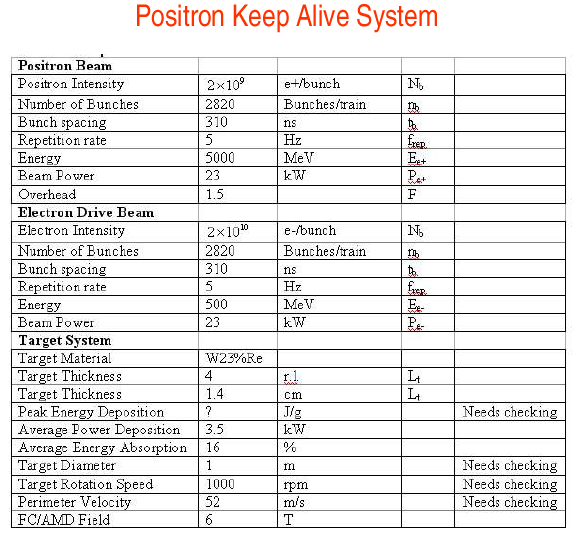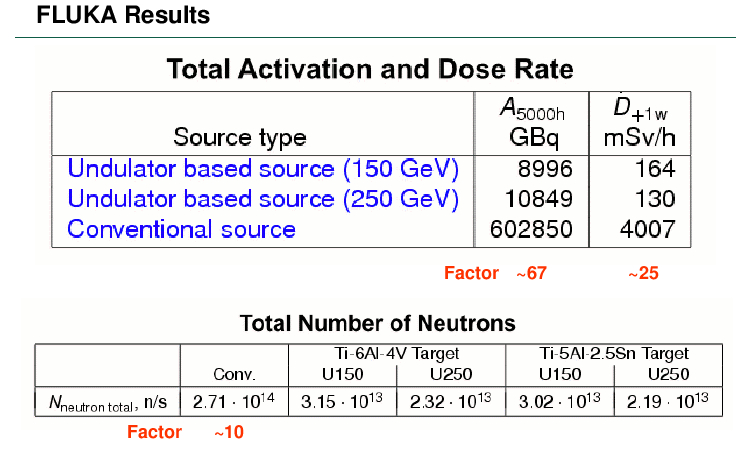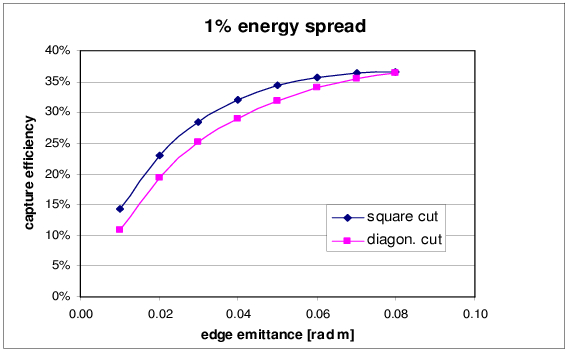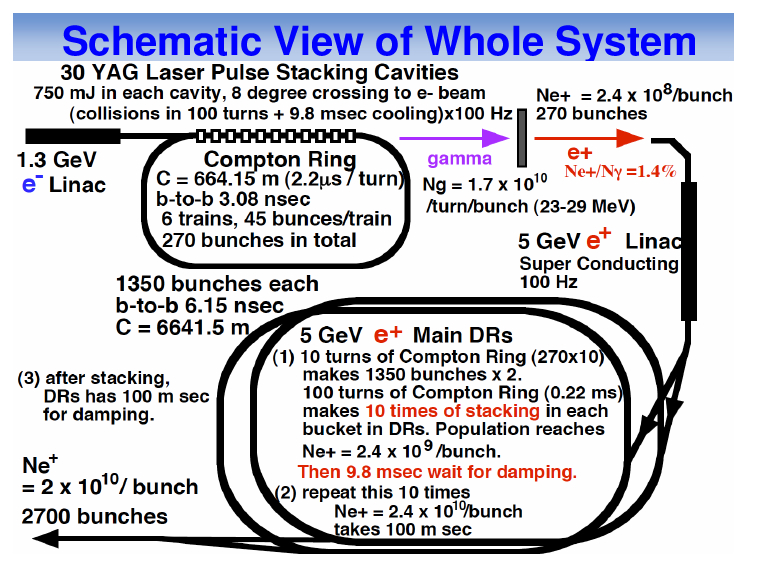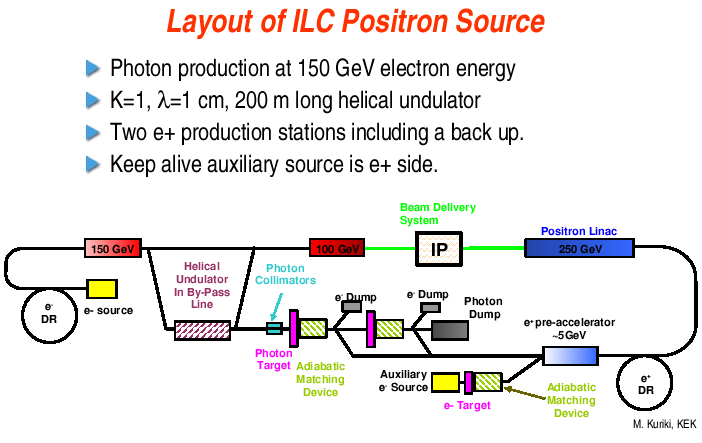 In the ILC Baseline Configuration Document (BCD) the undulator-based
positron source
has been chosen as baseline design. A
short description
and the complete description of the BCD
positron source is linked;
the layout can be seen on the
right picture
and is explained in more detail in
this talk.
In the ILC Baseline Configuration Document (BCD) the undulator-based
positron source
has been chosen as baseline design. A
short description
and the complete description of the BCD
positron source is linked;
the layout can be seen on the
right picture
and is explained in more detail in
this talk.
Requirement: A yield of 1.5 positrons accepted into the damping ring per electron through the undulator has been chosen for the design as an operational safety factor. Operating the undulator with an energy of at least 150 GeV matches this requirement, see undulator yield. The chosen BCD undulator parameters are listed here. The undulator-based scheme provides an easy and cheap upgrade path to the ILC option of using polarized positron beams: adjustment of the undulator length plus implementation of photon collimation and additional polarimeters and spin rotators as appropriate. |
